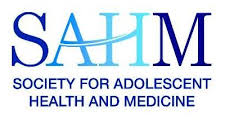Specialty Designation
Fellowship
In same state as program
6
In NHSC or similar underserved area
2
Number of accredited programs
34
Length of accredited training
Minimum number of prior years required
Offers graduate year 1 positions, available immediately upon medical school completion
No
Average number of PY1 interviews
9.60
Percent of programs requiring Step 1 score for interview
91.10
Percent of programs requiring Level 1 score (for DOs) for interview
64.70
Total number of active residents/fellows
Average number of residents/fellows
2.70
Average percent female
83.80
Average percent international medical graduates
8.30
Average percent DOs
12.90
Average number of full-time physician faculty
7.20
Average number of part-time physician faculty
0.50
Average percent female full-time physician faculty
73.30
Average ratio of full-time physician faculty to resident/fellow
2.80
Average hours on duty per week
45.90
Average maximum consecutive hours on duty
13.00
Average days off duty per week
1.80
Average percent of training in hospital outpatient clinics
53.20
Average percent of training in non-hospital ambulatory care community settings
23.10
Average number of days of vacation
19.80
Average resident/fellow compensation
Specialty Overview
Adolescence links childhood with the adult years. Subspecialty programs in adolescent medicine integrate the relevant areas of pediatrics and the pediatric subspecialties and transition patients to family medicine, general internal medicine and the internal medicine subspecialties, psychiatry, obstetrics and gynecology, orthopaedic surgery, sports medicine, dermatology, pediatric surgery, and general surgery, as well as with related fields, such as clinical pharmacology/toxicology, psychology/mental health services, counseling, social work, education/school systems, nutrition, law and the justice system, and public health (1).
Sources
- Accreditation Council for Graduate Medical Education (ACGME)
